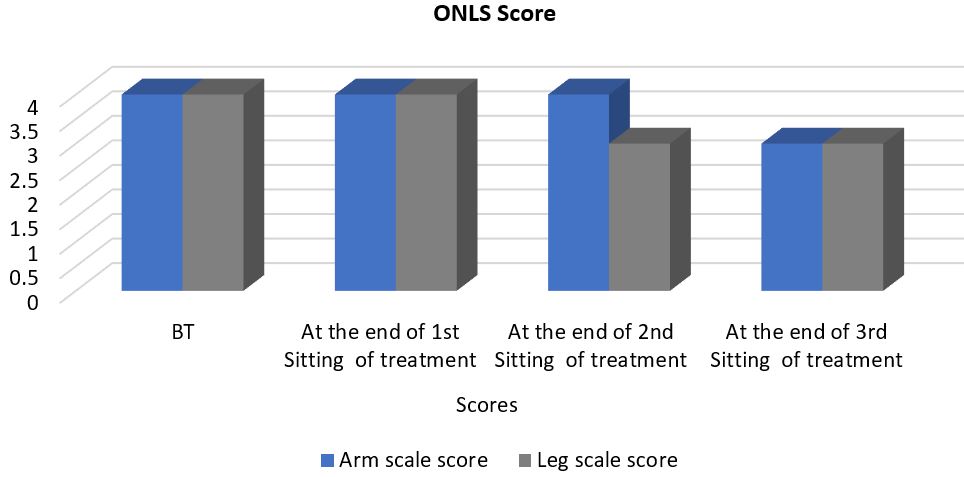Management of Charcot-Marie-Tooth Disease through Ayurveda Principles - A Case Report Highlighting Beejadushti with Mamsagata Vata
DOI:
https://doi.org/10.21760/jaims.10.5.46Keywords:
Mamsagatavata Vyadhi, Beejadushti, Charcot-Marie-Tooth disease, Panchakarma procedures, Case ReportAbstract
Charcot-Marie-Tooth (CMT) disease is the most common inherited neuromuscular disorder affecting peripheral nerves, leading to progressive muscle weakness, sensory loss, and foot deformities. It occurs in approximately 1 in 2,500 individuals and is primarily caused by genetic mutations affecting the myelin sheath or axons. Prognosis varies by type, and conventional management includes surgical interventions, orthotic support, and pharmacologic therapy such as NSAIDs and tricyclic antidepressants. In Ayurveda, symptoms such as Mamsa Kshaya (muscle wasting), Sparshahani (sensory loss) and Balakshaya (weakness) suggest vitiation of Vata and Kapha Doshas, correlating with Vatavyadhi and Mamsagata Vata. CMT, being a genetically predisposed condition (Beejadushti), may be considered Asadhya Vyadhi. However, Ayurvedic interventions like Panchakarma and Shamanaushadhi offer symptomatic relief. A 4-year-old female diagnosed with CMT presented with bilateral foot drop, claw hands, and muscle weakness. She was admitted to the Kaumarabhritya department of SDM Institute of Ayurveda, Bengaluru, and treated with Panchakarma therapies including Sarvanga Abhyanga and Matra Basti. The patient showed significant clinical improvement on post-treatment. While CMT remains incurable due to its genetic basis, Ayurvedic management can provide symptomatic relief and improve quality of life.
Downloads
References
Neurobiol Dis. 2024;190:106467. Available from: https://doi.org/10.1016/j.nbd.2024.106467 [cited 2025 Aug 4].
Pareyson D, Marchesi C. Diagnosis, natural history, and management of Charcot–Marie–Tooth disease. Lancet Neurol. 2009;8(7):654–67.
Fridman V, Bundy B, Reilly MM, Pareyson D, Bacon C, Burns J, et al. CMT subtypes and disease burden in patients enrolled in the Inherited Neuropathies Consortium natural history study: a cross-sectional analysis. J Neurol Neurosurg Psychiatry. 2015;86(8):873–8.
Hoebeke C, Bonello-Palot N, Audic F, Boulay C, Tufod D, Attarian S, et al. Retrospective study of 75 children with peripheral inherited neuropathy: Genotype-phenotype correlations. Arch Pediatr. 2018;25(8):452–8.
Wiener C, Fauci A, Hauser S, Longo D, Jameson LJ, Kasper D, et al. Harrison's Principles of Internal Medicine Self-Assessment and Board Review. 20th ed. Vol. 2. New York: McGraw-Hill Education; 2012. p. 3452, 3610. Chapter 384.
Sharma RK, Dash B. Charaka Samhita: Text with English Translation and Critical Exposition Based on Chakrapani Datta's Ayurveda Dipika. Vol. 1. Varanasi: Chowkhamba Sanskrit Series Office; 2014.
ResearchGate. Available from: https://www.researchgate.net/publication/337873486 [cited 2025 Aug 4].
Patil A, Deshpande S, Kulkarni A. Ayurvedic management of hereditary motor sensory neuropathy (Charcot-Marie-Tooth disease): A case report. J Ayurveda Integr Med. 2021;12(2):389–92.
Hislop HJ, Avers D, Brown M. Daniels and Worthingham's Muscle Testing: Techniques of Manual Examination and Performance Testing. 9th ed. St. Louis: Elsevier; 2014.
Graham RC, Hughes RA. A modified peripheral neuropathy scale: the Overall Neuropathy Limitation Scale. J Neurol Neurosurg Psychiatry. 2006;77(8):973–6.
Pagliano E, Moroni I, Baranello G, Magro A, Marchi A, Bulgheroni S, et al. Outcome measures for Charcot-Marie-Tooth disease: clinical and neurofunctional assessment in children. J Peripher Nerv Syst. 2011;16(3):237–42.
Kazamel M, Boes CJ. Charcot Marie Tooth disease (CMT): historical perspectives and evolution. J Neurol. 2015;262(4):801–5.
Patil VS, Bhatted SV. Role of Garbhopaghatakara Bhavas in the pathogenesis of congenital disorders: An Ayurvedic review. AYU. 2012;33(3):365–70.
Priyalakshmi, Thomas A, Reshma P. A review on the pathogenesis and management of Vatavyadhi with focus on the scope for Rasayana therapy. J Ayurveda Case Rep. 2022;5(9):109–16.
Rao PS, editor. Ashtanga Samgraha of Vagbhata, Sutra Sthana. 1st ed. Varanasi: Chowkamba Sanskrit Series; 2005. Ch. 3, Ver. 56. p. 31.
Patgiri BJ, Prajapati PK. A review on therapeutic uses of medicated oils (Taila) in Ayurveda. AYU. 2011;32(3):313–7.
Hebbar R. Ashtanga Hridayam Chikitsa Sthana Chapter 21: Vatavyadhi Chikitsitam (Treatment of diseases of vata origin). Easy Ayurveda [Internet]. 2024 Oct 23. Available from: https://www.easyayurveda.com/2024/10/23/ashtanga-hridayam-cikitsasthanam-chapter-21-vatavyadhi-chikitsitam-treatment-of-diseases-of-vata-origin
Arun Raj GR, Uppinakuduru S, Rao PN. Comparative clinical study to assess the effectiveness of Salavana Upanaha Sweda with and without Parisheka on spasticity in children with Cerebral Palsy. Ann Ayurvedic Med. 2022;11(1):22–37.
Zahiruddin S, Basist P, Parveen A, Parveen R, Khan W, Gaurav, et al. Ashwagandha in brain disorders: A review of recent developments. J Ethnopharmacol. 2020;257:112876.
Panda AK. Principles and Practice of Kayachikitsa. Vol. 1. Varanasi: Chaukhambha Publications; 2011. p. 356–8.
Sharma PV. Charaka Samhita of Agnivesha. Vols. 1–3. Varanasi: Chaukhambha Orientalia; 2009. Sutra Sthana. 13/13–14.
Singhai S, Verma R, Tiwari A. Pharmacological and phytochemical evaluation of Mashabaladi kwath. Int J Res Ayurveda Pharm. 2017;8(Suppl 3):108–11.
Nishteshwara. Sahasrayoga, Kashaya Prakarana. Varanasi: Chowkhamba Sanskrit Series; 2006.
Bhala RR. Ayurveda approaches for Bala Roga w.s.r. to importance of classical formulations. Himalayan J Health Sci [Internet]. 2022 Jun 15 [cited 2022 Jun 15];7(2):19–21. Available from: http://www.hjhs.co.in/index.php/hjhs/article/view/131















